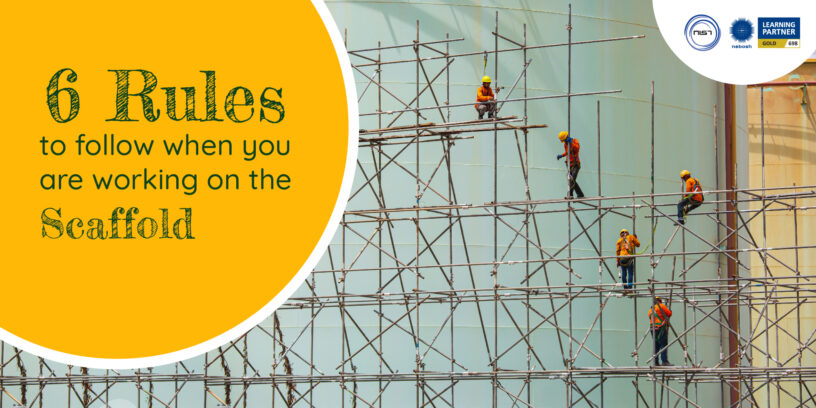Working in the construction sector requires teamwork. This means that you are responsible not just for your personal safety on the job site, but also for the safety of your coworkers – and vice versa. This is especially true if you work at a high level, such as on scaffolding. Accidents, such as scaffold falls, should be avoided at all costs.
A solid scaffolding system is already a good first step towards working securely at heights. However, your behavior on the scaffold is equally critical to ensuring that everyone arrives home safely at the end of the day. If you and your team follow the six rules below, you can help each other operate securely on the scaffold.
#1 Fall prevention begins before stepping up the scaffold.
Falling off the scaffold can be highly fatal. Before stepping onto the scaffold, precautions can be taken. Make sure the three-part side guards are present on each scaffold level you will be working on before you access the scaffold. This comprises of the central rail, the guardrail, and the toe board.
As soon as you begin working, the scaffold should be free of any potential trip risks. For instance, open hatches providing ladder access fall under this category. Close them before moving around freely on the scaffold.
#2 Avoid hazards caused by falling objects.
You know it’s best not to do it, but it can happen – Something no longer required is thrown from the scaffolding to the ground. After all, that is the quickest route. You should still take the longer path and avoid throwing anything from the scaffold to ensure that you and your crew can work securely on it.
Falling objects, whether intentionally or unintentionally dropped, pose a greater risk if you are working on many scaffold levels at the same time, directly below and above each other. Always ensure to avoid this to save life & prevent any injury from falling objects.
#3 Make use of appropriate stairs & ladders
Each scaffold must include adequate ladders, stairs, or stair towers to allow you to climb up & down the scaffold safely. Jumping from one scaffold level to another, or even from the scaffold to the ground, should be avoided.
#4 Consider the load-bearing capabilities of the scaffold decks.
A good scaffolding can withstand a lot. You and your team, on the other hand, should always be aware of the load-bearing capabilities of the scaffold decks. Bring only items that can be supported by the decks onto the scaffold. Make sure the corridor is likewise wide enough so that your work stuff does not become a tripping hazard.
#5 Make no modifications to the scaffold while it is in use.
The stability of your scaffold must be ensured at all times when in use. As a result, while the scaffold is in use, you should not make any changes to it. You should not, for example, remove anchors, scaffold decks, or side guards by yourself. The subsequent installation of rubble chutes should likewise be avoided if possible.
If the scaffold has to be modified, it cannot be used again until it has been examined by a competent person who has undergone adequate training.
#6 Report scaffold defects immediately.
It is possible that you will find flaws or damage to the scaffolding. You should immediately report them to the scaffolding in charge or to your supervisor.
Do you have any other questions about scaffolding safety? Our team will gladly assist you!
At NIST Global, we offer International Safety Course from Scaffold Training Institute, USA – (1) Scaffolding Erector Training (2) Scaffolding Inspector Training. Achieve Certification on Successful Completion!
We also Offer Bespoke Scaffold Training customized as per your industrial needs.
For further details, kindly call our corporate team @ 91 8754465588 or mail us @ info@nistglobal.com














Leave a Reply